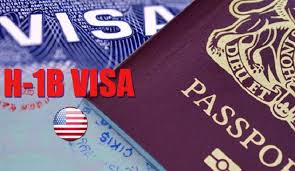Immigration News & Updates         eNewsletter
        eNewsletter
 POSTING DATE: MARCH 23, 2015
Learn More About:
This Week's Immigration NewsÂ
Immigration News & Updates eNewsletter ©  2011  - 2015Â
For questions about U.S. Residency, Green Cards and Immigration Visas, Visit our Website at: www.ImmigrateToday.com or  call our office at: (954) 382-5378
Check Out This Cool Stuff For Immigrants....
Advisory For H-1B Work Visa Applications
Immigration
Questions & Answers
Question:Â My son came to America when he was 3 years old and has been here ever since. He is turning age 15 next month. I want you to file for his DACA status, but Iâve been reading that the presidentâs immigration program has been stopped by the court, so now I guess my son wonât be able to apply. Can you please confirm this for me? Thank you.
Answer:Â Thatâs a great question. There are two DACA programs, one, begun in 2012, which required children to have entered the U.S. before age 16, on or by June 15, 2007, and capped the age of the applicant to 30 and the new DACA program under the Presidentâs Executive Actions, which was scheduled to begin in February 2015 (now temporarily suspended by a Federal Court), which extended the date a child entered the U.S. before age 16 to on or before January 1, 2010 and removed the cap on age. The 2012 DACA is still in effect and has not been suspended. Therefore, children qualifying under its requirements are eligible to apply for DACA status once they reach age 15. Since your son came to the U.S. before age 16 and has been in the U.S. since before June 15, 2012, we can apply for his DACA status as soon as he turns age 15 next month.
You can find out more about obtaining DACA status by visiting our website at: www.Immigratetoday.com andÂ
clicking on the Immigration Newsletter link or by calling our office at: 954-382-5378.
Important Tips For Maintaining Student Visa StatusÂ
The problem is that many Students come to the U.S. to attend school and either drop down below the required full-time class hours, stop attending classes, or engage in employment which is specifically prohibited under the regulations. In such instances, students may fall out of legal status and find it difficult, if not impossible to regain legal status, thus jeopardizing their immigration status in the U.S.. In cases where a student fails to maintain fulltime classes, then leaves the U.S., he or she will likely be unable to re-enter the U.S. again or to obtain a new visa from the U.S. Consulate abroad, by virtue of having violating student visa regulations. Similarly, once a student falls out of student visa status for a period of time, he or she becomes ineligible to be âreinstatedâ in valid student visa status or to obtain any other legal visa status in the U.S..Â
With such harsh consequences, students are well advised to maintain full-time classes, stay in school and refrain from unauthorized employment. After graduation, not only can graduates obtain a work permit, but if qualifying, can be sponsored by a U.S. company for an H-1B work visa for up to six years after graduation, as well as being sponsored for Residency.â
You can learn more about applying for the H-1B work visa by visiting our Website at: www.Immigratetoday.com orÂ
by calling our office at: 954-382-5378.â
As the April 1st date nears for the USCIS to begin accepting H-1B Work Visa applications, it is important to understand several technical issues that pertain to both the sponsoring company and foreign national being sponsored. The USCIS does not accept H-1B applications which it receives before April 1st, so be sure to send the application out no sooner than March 31st for next day delivery.Â
Since the USCIS usually receives thousands more applications than the available visas, it will do a âlotteryâ to randomly select applications to fill the quota, then send the remaining applications back to the employer, along with filing fees â although it can often take several weeks or more to receive the returned package.Â
Foreign nationals who are being sponsored should take care to make sure that they fully understand the terms of the H-1B visa and maintenance of status issues. Those inside the U.S. whoâs I-94 expires before September 30, 2015 are not permitted to remain legally in the U.S. after that date, even though an H-1B visa may be pending or even approved. However, those in the U.S. whoâs I-94 expires on or after September 30th are legally allowed to change status in the U.S. and begin working for the sponsoring employer on October 1, 2015, except nationals who are in the U.S. on âVisa Waiverâ often referred to as ESTA. F-1 students on OPT work permits are permitted to change status in the U.S. and extend OPT status once the H-1B visa receipt is issued.Â
For questions about the H-1B Work Visa, visit our website at: www.Immigratetoday.com or call our office at: 954-382-5378.â
Helpful Immigration Tips You Can Use
Under U.S. Student Visa regulations, foreign students are able to come to the U.S. and attend colleges and technical schools on F-1 (academic) and M-1 (technical) Student Visas and to remain in the U.S. as long as they continue attending school fulltime as required under their student visa status. The drawback of student Visas, however, is that there are very strict rules against working.Â
As a general rule, foreign students are not allowed to work in the U.S. while completing their educational program and are only permitted to work under very specific circumstances. In rare instances, when a student can demonstrate extreme financial hardship, on-campus employment may be permitted up to 20 hours per week, while, off-campus employment is limited to internship or a specific work study program required for a specific degree.Â
Once an F-1 student graduates from an Associateâs Degree or higher program, he or she is eligible to apply for a one year work permit under the âOptional Practical Trainingâ (called OPT) regulations which allow students to work off campus in their field of study for one full year after graduation. Students in certain STEM (Science, Technology, Engineering and Math) fields are also eligible to apply for an additional 17 months of OPT (for a total of 29 months) as long as their employer qualifies by having registered under the new âe-verifyâ system.
How To Replace A Lost I-94 CardÂ
If your I-94 card is lost, stolen or seriously damaged, you can apply to replace it by filing Form I-102, Application for Replacement/Initial Arrival-Departure Document. You also may file Form I-102 if you wish to receive a replacement I-94 card with corrected information on it â for example, if the immigration officer spelled your name wrong on the initial I-94 card. The nonrefundable filing fee for Form I-102 is $320. It generally takes about 60 days to receive the I-94 replacement card in the mail.
Under the new electronic I-94 system implemented in 2013, international visitors are no longer issued paper I-94 cards upon entry into the U.S.. Instead, individuals are provided with instructions on accessing their I-94 records online and printing the I-94 card out from the U.S. Customs and Border Protection (CBP) agency. You can visit the CBP site to print out your paper I-94 cards:
An I-94 is a small slip of paper which was, until recently issued to all international visitors and visa holders entering the U.S.. Officially called the Arrival/Departure card, the I-94 contained the date of entry into the U.S. as well as the date by which the individual must depart from the U.S.. Often, individuals do not understand how important this little card is until it is too late.
In order to change immigration status inside the U.S. to any other immigrant or non-immigrant visa status, immigration regulations require that a copy of the I-94 be included with the application to establish eligibility. Foreign nationals must prove that they entered the U.S. legally and were inspected by an immigration officer in order to qualify to file for immigration status in the U.S.. Those who did not enter the U.S. legally are generally not entitled to obtain any new immigration status in the U.S., even when married to a U.S. citizen unless a Waiver is obtained.
Immigration How To:
How Do I Prepare Form My Naturalization Ceremony and U.S. Citizenship?
Understanding What Happens At Your Naturalization Ceremony And Once You Become a U.S. Citizen
Once your Application for Naturalization is approved, the USCIS puts your case in the queue to be scheduled for your Oath of Allegiance which takes place at your naturalization ceremony. This taking of your Oath of Allegiance complete the process of becoming a U.S. citizen.
Understanding the types of Oath Ceremonies:
There are two kinds of Oath of Allegiance ceremonies, one, is a judicial ceremony, where the court administers the Oath of Allegiance for Residents who have requested a name change and the regular administrative ceremony, during which the USCIS administers the Oath of Allegiance.
So whatâs going to happen at your naturalization ceremony?
1. Receive Your Naturalization Ceremony Notice to Take the Oath of Allegiance
While some Immigrants who request it may be able to participate in a naturalization ceremony on the same day as their naturalization interview, many Residents must wait for the USCIS mail them a notice with the date, time, and location of their scheduled naturalization ceremony, called a Notice of Naturalization Oath Ceremony (Form â N-445). Those who cannot attend the scheduled naturalization ceremony must return the notice to their local USCIS office, along with a letter requesting a new date and explaining why they are not able to attend the scheduled naturalization ceremony. Residents who fail to show up for their naturalization ceremony without having requested a rescheduling may receive a denial of their naturalization case.
2. Complete Form N-445, Notice of Naturalization Oath Ceremony before checking in at the Ceremony
Residents should complete Form N-445, Notice of Naturalization Oath Ceremony before arriving at the ceremony, prior to check in with USCIS. During check-in, a USCIS officer will review your responses to the questionnaire.
3. Surrender of your Permanent Resident Card (Green Card)Â
Residents who are becoming U.S. Citizens must surrender their Permanent Resident Cards to the USCIS at the time they check- in for the naturalization ceremony. Those who have lost their cards can receive a waiver.Â
4. Taking the Oath of Allegiance to the United States
A Resident is not a U.S. citizen until he/she takes the Oath of Allegiance to the United States during the naturalization ceremony. After the Oath, new U.S Citizens receive their Certificate of Naturalization.
5. Notes about the Certificate of Naturalization
New U.S Citizens should carefully review the Certificate of Naturalization for accuracy while still at the ceremony. Any inaccuracies must be brought to the attention of the USCIS before leaving the ceremony. Unless or until you apply for your U.S. Passport, your Certificate of Naturalization is your official proof of your U.S. Citizenship. Those who lose their Certificate of Naturalization must request a replacement by filing Form N-565, Application for Replacement Naturalization/Citizenship Document and paying the $345 USCIS filing fee. The waiting time for a replacement can be lengthy.
downloading the form.Â
6. Time to apply for Your U.S. Passport
Once you receive your Certificate of Naturalization, you can immediately apply for a U.S. passport. You will receive an application for a U.S. passport at your naturalization ceremony, called the âU.S. Citizenship Welcome Packetâ or you can go online to the U.S. Passport office Â
7. Time to Register to Vote!
Now that you are a U.S. Citizen, it is your right and privilege to vote. You can register to vote at certain locations in your community, which may include post offices, motor vehicle offices, county boards of election, and offices of your state Secretary of State. You can read more about registering to vote by reading the government publication: âA Voterâs Guide to Federal Elections."
8. Final Step: Update your Social Security Record
After you become a U.S. Citizen, you will need to notify the Social Security Administration (SSA) to update your Social Security record. You can find your local Social Security office by calling 1-800-772-1213 or by visiting: www.socialsecurity.gov. You can go to your local SSA office about ten days after your ceremony to give time for the SSA to be able to access your new status in the USCIS records. Be sure to take your Certificate of Naturalization or U.S. passport with you. Good luck!Â










